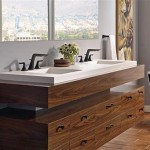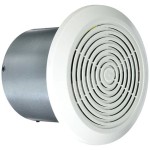Average Cost to Remodel a Master Bathroom: A Comprehensive Guide
Remodeling a master bathroom is a significant investment that can drastically improve a home’s value and functionality. However, understanding the associated costs is crucial for effective budgeting and project planning. The overall expense can fluctuate widely based on several factors, including the scope of the remodel, the quality of materials selected, and the geographic location of the property. This article provides a detailed overview of the average cost to remodel a master bathroom, breaking down the various components and considerations that influence the final price tag.
Generally, homeowners can expect to spend anywhere from $10,000 to $35,000 or more on a master bathroom remodel. This range is broad because the project's complexity can vary significantly. A minor remodel, involving cosmetic updates like painting, replacing fixtures, and updating hardware, will fall on the lower end of the spectrum. A major remodel, involving structural changes, relocating plumbing, and installing high-end features, will naturally be more expensive. Luxury remodels, incorporating custom designs and premium materials, can easily exceed $50,000.
To accurately estimate the cost of a master bathroom remodel, it's essential to consider the various elements that contribute to the overall expense. These include labor costs, material costs, plumbing and electrical work, demolition and disposal, and unforeseen expenses that may arise during the project. Each of these aspects will be discussed in detail below.
Key Point 1: Labor Costs
Labor costs typically represent a significant portion of the overall remodeling budget, often accounting for 40% to 60% of the total expense. These costs encompass the fees charged by various professionals involved in the project, including general contractors, plumbers, electricians, tile installers, and painters. The specific rates charged by these professionals can vary depending on their experience level, qualifications, and geographic location.
A general contractor is often responsible for overseeing the entire remodeling project, coordinating the work of different tradespeople, managing the budget, and ensuring that the project is completed on time and within the agreed-upon scope. Their fees are typically calculated as a percentage of the total project cost, ranging from 10% to 20%. For a complex bathroom remodel, employing a general contractor can be invaluable for streamlining the process and minimizing potential issues.
Plumbing and electrical work are specialized tasks that require the expertise of licensed professionals. Plumbing costs can vary depending on the complexity of the project, such as relocating plumbing fixtures, installing new pipes, or upgrading the water heater. Similarly, electrical costs can vary based on the need for new wiring, outlets, lighting fixtures, and ventilation fans. The hourly rates for plumbers and electricians can range from $50 to $150 or more, depending on local market conditions.
Tile installation is another significant labor cost, particularly if intricate patterns or high-end materials are used. The cost of tile installation can range from $5 to $15 per square foot, depending on the type of tile, the complexity of the pattern, and the experience of the installer. Painting is a relatively less expensive labor cost, but it is still an important aspect of the overall remodel. The cost of painting can range from $2 to $5 per square foot, depending on the type of paint and the number of coats required.
Key Point 2: Material Costs
Material costs constitute another substantial portion of the master bathroom remodeling budget. The specific materials needed will vary depending on the scope of the project, but common items include flooring, tiles, countertops, cabinets, fixtures (such as toilets, sinks, and faucets), showers or bathtubs, lighting, and hardware. The quality and style of these materials will significantly impact the overall cost.
Flooring options for bathrooms include tile, stone, vinyl, and engineered wood. Tile is a popular choice due to its durability, water resistance, and wide range of styles. The cost of tile flooring can range from $3 to $20 or more per square foot, depending on the material, design, and quality. Stone flooring, such as marble or granite, is a more luxurious option that can add significant value to the bathroom. However, it is also more expensive, ranging from $10 to $50 or more per square foot.
Countertops are another important material consideration. Popular countertop materials include granite, quartz, marble, and solid surface. Granite and quartz are durable and aesthetically pleasing options that are relatively low maintenance. The cost of granite and quartz countertops can range from $40 to $100 or more per square foot. Marble is a luxurious option, but it is more porous and susceptible to staining. Solid surface countertops are a more affordable option, but they may not be as durable as natural stone.
Cabinets are essential for storage and organization in the bathroom. Stock cabinets are the most affordable option, but they may not offer the same level of customization and quality as semi-custom or custom cabinets. Semi-custom cabinets offer a wider range of sizes and styles than stock cabinets, while custom cabinets are designed and built to the specific dimensions and preferences of the homeowner. The cost of bathroom cabinets can range from $100 to $1,000 or more per linear foot, depending on the materials, construction, and customization options.
Fixtures such as toilets, sinks, faucets, showers, and bathtubs can also significantly impact the material costs. High-end fixtures with advanced features and stylish designs can be quite expensive. For example, a high-efficiency toilet can cost from $200 to $800 or more, while a luxury shower system with multiple showerheads and body sprays can cost from $1,000 to $5,000 or more. Lighting fixtures and hardware also contribute to the overall material costs. LED lighting fixtures are energy-efficient and long-lasting, but they may be more expensive than traditional incandescent or fluorescent fixtures.
Key Point 3: Plumbing and Electrical Considerations
Plumbing and electrical work are critical components of a master bathroom remodel, and they can significantly impact the overall cost. Relocating plumbing fixtures, such as the toilet, sink, or shower, can be particularly expensive, as it requires rerouting pipes and potentially altering the existing plumbing system. Similarly, adding new electrical outlets, lighting fixtures, or ventilation fans may require new wiring and circuit breakers.
Before starting a master bathroom remodel, it's essential to assess the existing plumbing and electrical systems to identify any potential issues or upgrades that may be required. Older homes may have outdated plumbing or electrical systems that need to be updated to meet current building codes and safety standards. This can add to the overall cost of the remodel, but it is essential for ensuring the safety and functionality of the bathroom.
When planning the plumbing and electrical work for a master bathroom remodel, it's important to consider the placement of fixtures and outlets to maximize functionality and convenience. For example, placing electrical outlets near the sink and vanity is essential for powering hair dryers, curling irons, and other personal care appliances. Similarly, ensuring adequate lighting throughout the bathroom is crucial for both safety and aesthetics.
Ventilation is another important consideration for bathroom remodels. A properly functioning ventilation fan helps to remove moisture and prevent the growth of mold and mildew. The cost of installing a ventilation fan can range from $100 to $500 or more, depending on the size and features of the fan. When selecting a ventilation fan, it's important to choose one that is appropriately sized for the bathroom and that meets local building codes.
The type and quality of plumbing and electrical fixtures can also impact the overall cost of the remodel. High-end faucets, showerheads, and lighting fixtures can add to the expense, but they can also enhance the aesthetic appeal and functionality of the bathroom. When selecting plumbing and electrical fixtures, it's important to consider both the style and the quality to ensure that they are durable and long-lasting.
Demolition and disposal costs are also important to consider. Removing existing fixtures, flooring, and walls can be labor-intensive and may require specialized equipment. The cost of demolition and disposal can range from $500 to $2,000 or more, depending on the scope of the demolition and the disposal fees in your area.
Finally, it's essential to budget for unforeseen expenses that may arise during the remodeling process. Unexpected issues, such as hidden water damage or structural problems, can add to the cost of the project. It's generally recommended to set aside 10% to 20% of the total budget for contingency expenses to cover these unforeseen costs.
In conclusion, the average cost to remodel a master bathroom can vary significantly depending on the scope of the project, the quality of materials selected, and the geographic location of the property. By carefully considering the various factors outlined in this article, homeowners can develop a realistic budget and plan for their bathroom remodel, ensuring that the project is completed successfully and within budget.

How Much On Average Does It Cost To Remodel A Bathroom Janssen Glass

How Much Does Bathroom Remodeling Cost In Ct Post

Managing Bathroom Renovation Costs Guide In Dc

How Much Does A Bathroom Remodel Cost Quicken Loans

Average Cost Of A Primary Suite Bathroom Remodel

What Does A Bathroom Remodel Cost 2025 S Modernize

How Much Does A Bathroom Renovation Cost Your Expert Guide To Making The Most Of Budget Decorilla Interior Design

How Much Will It Cost To Remodel My Bathroom

Bathroom Remodel Costs In 2024

Bathroom Renovation Cost How Much In The Des Moines Area 2025







